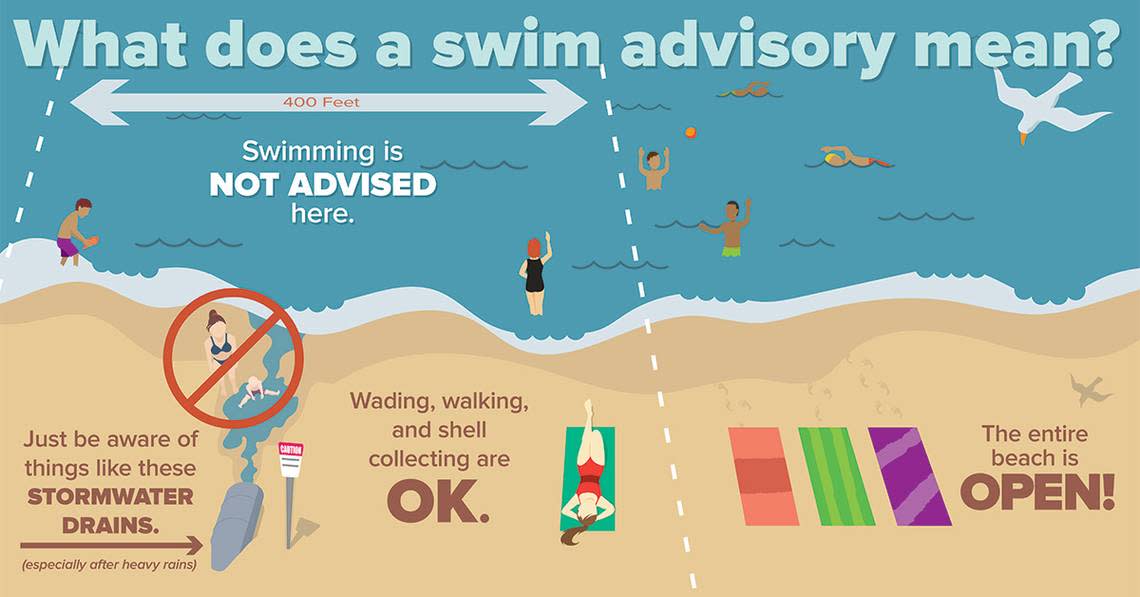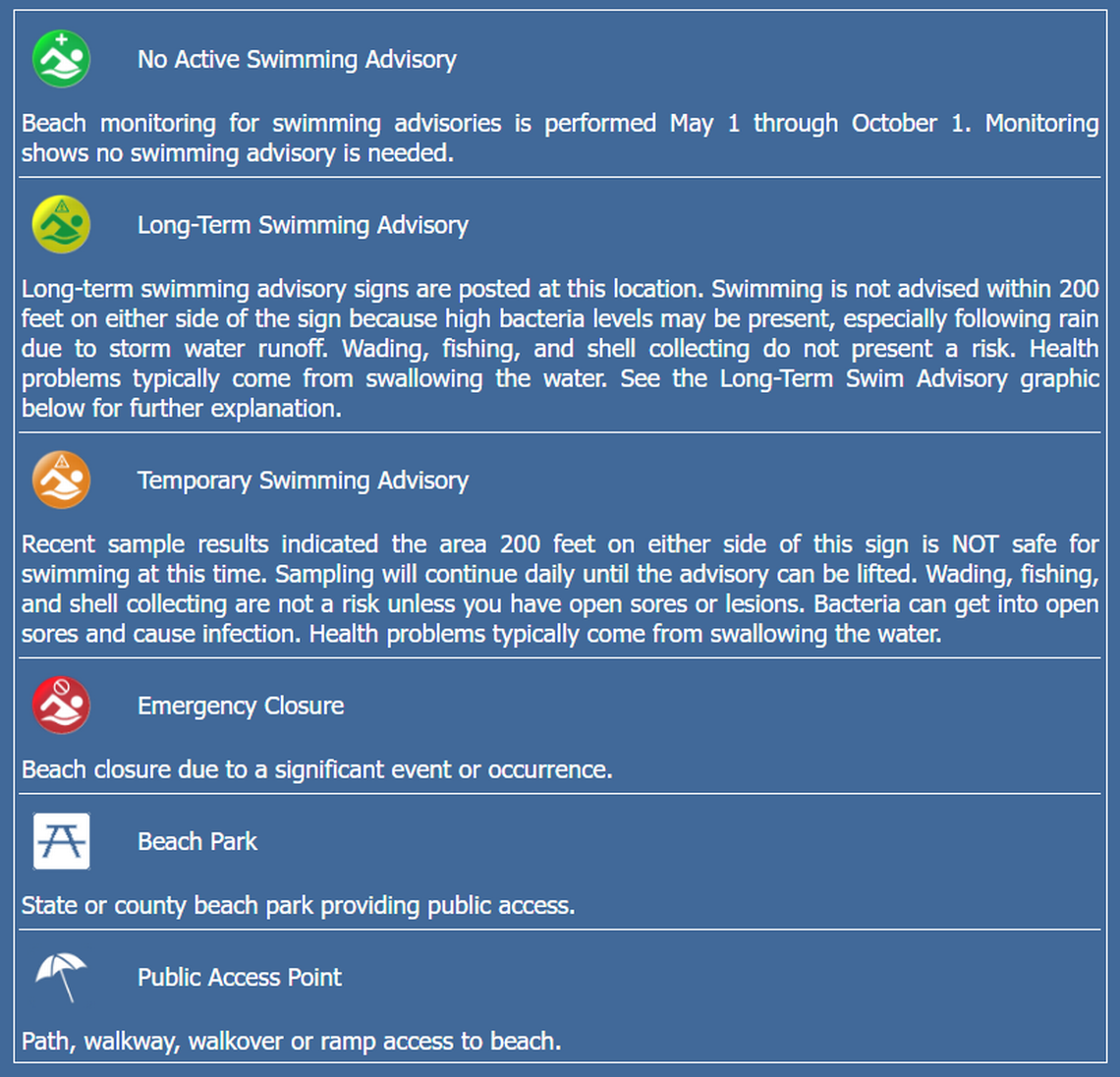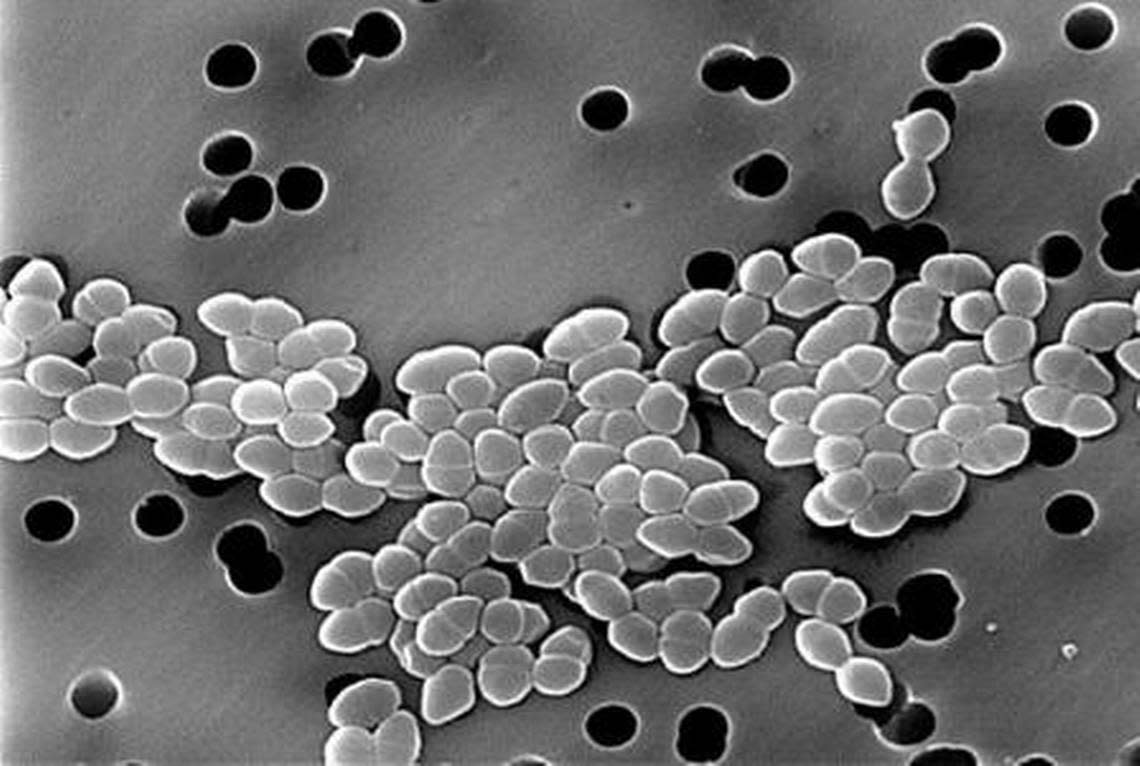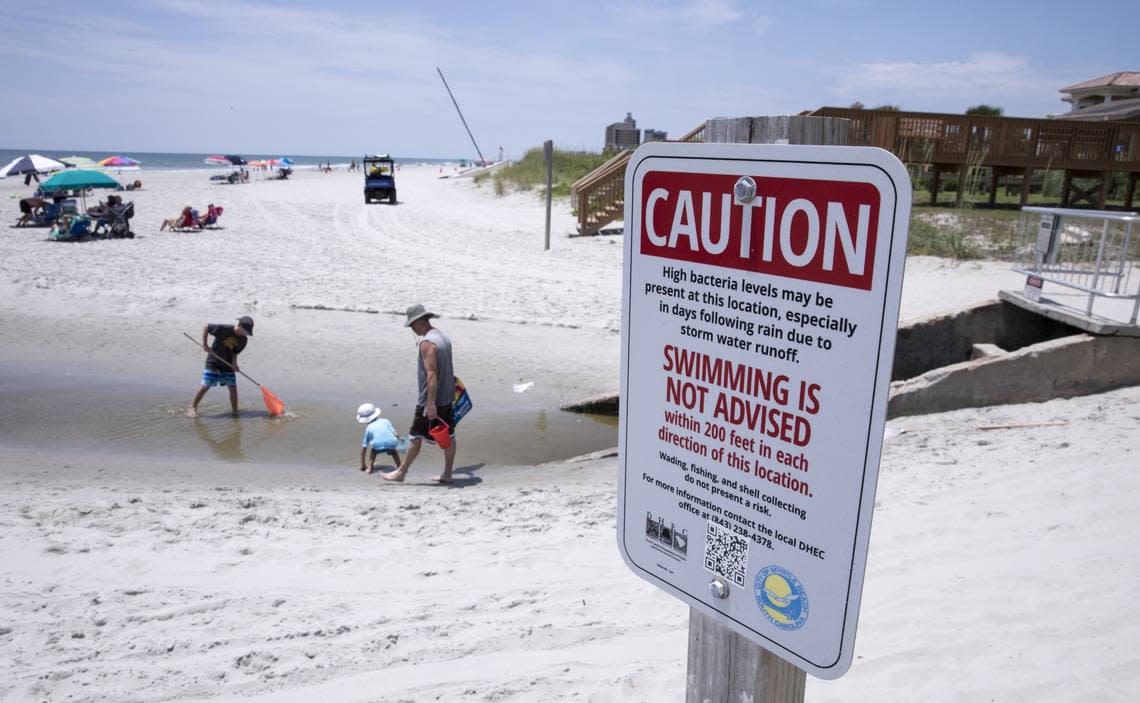What to know about bacteria and swim advisories along Grand Strand beaches
If you vacation or live along the Grand Strand, you’ve likely seen media reports about swim advisories issued due to high bacteria levels in sections of the ocean.
But what exactly causes that bacteria to rise, and more importantly — what are the possible effects of swimming in contaminated water?
The South Carolina Department of Health and Environmental Control issues temporary swim advisories along the coast during the swimming season, which runs from May 1 until Oct. 1.
According to information from DHEC, an advisory is issued if the ETCOC, short for enterococcus bacteria, measurement is greater than the accepted standard of 104 mpn/100mils. DHEC says the presence of this bacteria in the water may indicate that other disease-causing organisms may be present.
A temporary swim advisory generally lasts one to two days. Follow-up sampling is performed daily and advisories are lifted as soon as a sample shows that enterococcus bacteria levels drop below the standard.
Headed to the beach? These are the rules to know for the Myrtle Beach area

The advisories are issued in sections of the beach where stormwater drains, also called ocean outfalls, end and are all along Grand Strand beaches.
When DHEC issues an advisory, usually after a storm, officials advise to not swim in those areas. This also applies to areas where long-term swim advisory signs are placed.
“Long-term swimming advisories are put in place for monitoring stations with an increased possibility of high bacteria levels — especially following rain events — due to stormwater runoff,” DHEC explains. “A long-term advisory is issued for monitoring locations where more than 10 percent of the enterococcus data collected over the past five years exceeds the recreational use standard for enterococcus.”
The long-term advisories and signs are typically located where stormwater from outfalls or swashes and small creeks flow out across the beach.
Where can you find information on swimming advisories?
Aside from signs posted near areas where water samples are taken, you can see water quality updates and swim advisories online at DHEC’s S.C. Beach Access & Water Quality Guide. The resource provides not only provides information about beach access locations and amenities such as restrooms, showers, handicap access and where there are lifeguards, but also gives up to date information about water quality.
Below are the symbols used to DHEC to indicate the different levels of swim advisories. According to the Beach Access & Water Quality Guide, beach water quality monitoring for swimming advisories is only performed May 1 through Oct. 1.

What can happen if you swim in high levels of bacteria?
Enterococcus bacteria is a type of bacteria that lives in the intestinal tracts of people, pets and wildlife. Elevated levels of the bacteria can indicate if fecal matter is possibly contaminating water sources, according to the U.S. Environmental Protection Agency.

“Sources of fecal indicator bacteria such as enterococci include wastewater treatment plant effluent, leaking septic systems, stormwater runoff, sewage discharged or dumped from recreational boats, domestic animal and wildlife waste, improper land application of manure or sewage, and runoff from manure storage areas, pastures, rangelands, and feedlots,” the EPA explains on its website.
Enterococci are typically not considered harmful to people, according to the EPA, but their presence in the water may suggest that other disease-causing agents such as viruses, bacteria and protozoa might also be present.
“Any time you swim at the beach, or play in the sand at the beach, or anywhere where pollution may have reached a water source, you can get sick,” said Jilian Sansbury, a physician at Grand Strand Medical Center. “The most common illnesses that we see associated with swimming in polluted water include gastroenteritis, which usually manifests as nausea, vomiting, a stomachache, diarrhea , headache and fever.
“We can also see, especially in children, infections related to the ears, eyes, nose or throat. And in very highly polluted water sources, swimmers can be exposed to even more serious diseases.”
Some of those more serious illnesses include things like salmonellosis, shigellosis, or an infection caused by E. coli, according to Sansbury.
But DHEC notes wading, fishing and shell collecting do not pose a risk since most people get exposed to the pathogens after they swallow the water. Anyone with open sores or lesions are advised to not get in the water period, as high levels of bacteria can cause infections.
In July 2017, a woman took to Facebook alleging her mother became infected with a flesh-eating bacteria after getting in Myrtle Beach ocean water. City officials acknowledged the claim, but were unable to confirm the location and date of the incident, or its possible connection to Myrtle Beach water quality.
“If you have any symptoms that you think might be related to exposure to ocean water or gastroenteritis, call your doctor or see a physician immediately, because it may need to be treated with medication,” Sansbury said. “Any infection can be potentially life-threatening if it’s left to fester or isn’t treated appropriately.”
Ways to prevent getting sick at the beach
For one, health officials recommend the public to avoid swimming in areas where temporary swim advisories are issued until they get lifted.
“Most importantly, we should really remind the public not to swim or surf or have contact with ocean water typically within 72 hours after a big rain,” Sansbury said. “The rain tends to bring more pollutants into the water.”
In addition, DHEC officials warn to not swim or allow children to play in swashes and near outfalls.

“Although the shallow pools of water on the beach caused by swashes and stormwater seem like good places for children to play, they are NOT,” DHEC’s website states.
The pools of water on the beach are caused by runoff from paved surfaces and “often contain much higher levels of bacteria than the ocean.”
Never swim in the ocean during a storm or immediately following rainfall. Anything that enters the outfalls flows untreated right into the ocean.
“Heavy rain can wash bacteria and possibly harmful pathogens into the surf. High bacteria densities persist in the surf for hours after these rains and may increase swimmer’s risk of illness,” DHEC said.
